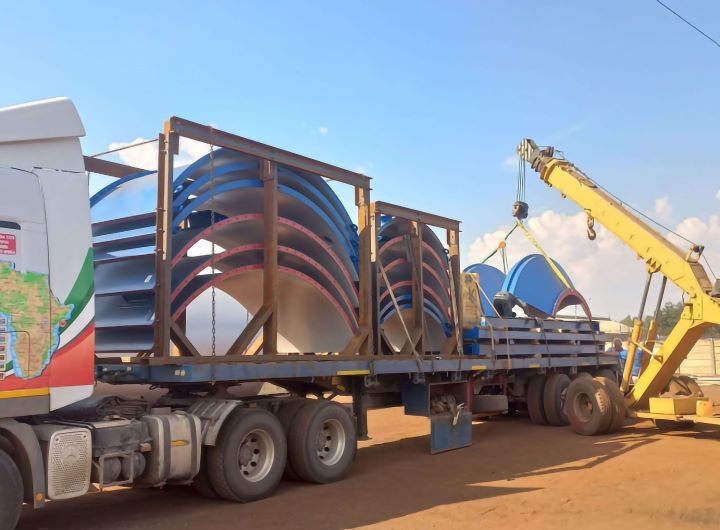
The imminent closure of the ArcelorMittal Newcastle ‘long’ steel products operation in Newcastle, KwaZulu-Natal, is likely to cause considerable turbulence within the local steel sector, with potential projected ‘knock-on’ effects including product shortages, quality issues and even price increases, according to Southern African Institute of Steel Construction (SAISC) Chief Executive Officer, Amanuel Gebremeskel.
Commenting on an announcement by ArcelorMittal South Africa in which the company advised that it had had exhausted all options and could not save the mill from closure, Gebremeskel warns that shutting down the only remaining fully integrated mill – and the largest producer of long steel products in South Africa – could have serious repercussions.
Economic challenges and supply shortages
According to ArcelorMittal South Africa’s board and management, aggressive cost-saving initiatives, improved raw material cost-savings, asset footprint adjustments and other productivity measures had unfortunately not managed to counter the combined impact of a slow economy, difficult trading environment, high logistics costs and protracted grid energy supply issues.
“The production and supply of angles, channels and IPE sections will be affected – and even though heavier long product steel sections such as UB and UC profiles will not, this will no doubt affect the local and regional market considerably.
Mini-mills, merchants and service centres are likely to play a crucial role in making up the shortfall that will be left by the mill closure, having to expand and ramp up their production accordingly to procure new sources of structural steel in the case of merchants and service centres, and billets or scrap metal in the case of the mini-mills. However, this will inevitably take time.
In addition, while we have several mini-mills producing good quality long steel products, their range may be limited. The mill closure may also have an adverse effect on the price of steel. In turn, various projects which are in the planning stages may be adversely affected both in terms of cost and scheduling,” Gebremeskel observes.
However, he adds that the engineers, detailers, merchants, fabricators and contractors who know how to design, specify and procure steel in such a way that the market disruption does not negatively affect their projects, will succeed despite challenges moving forward.
Benefits of beneficiation
The Newcastle mill is the only remaining fully integrated mill in South Africa which converts iron ore into steel. Other mills either recycle steel or use billets as their input material.
Gebremeskel points out that this is significant when it comes to the local beneficiation of South Africa’s abundant iron ore resources, which are mainly exported to steel manufacturers around the world.
He also laments the projected 3 500 job losses, in an area where unemployment is already high. “These are very worrying – particularly considering the already high levels of unemployment in South Africa. The steel industry provides well-paid, quality jobs and any manufacturing facility closure is therefore of great concern. Various jobs at value-adding service providers that are linked to the Newcastle operation will also be adversely affected,” he comments.
Steel quality and availability
Just as concerning, he adds, is that the SAISC – which is the acknowledged industry authority on South African structural steel material availability, training, technical specifications and standards – will have to reconsider the quality and range of steel products which are available locally, and communicate its findings to the market.
“Steel specifiers will also need to follow the market closely to ensure that the steel sections that they require are available, in the desired quantity and quality. Alternatively, they will need to think about redesigning their structures using substitute steel sections until the market stabilises,” he advises.
“Fabricators will have to communicate very closely and frequently with merchants, service centres and specifiers early in the design phase, so that only sections that are available in the desired timeframe, quality and quantity are specified. Contractors will also have to communicate very early on in the project life-cycle with fabricators, merchants and service centres – to ensure that material shortages or quality issues do not delay projects,” he continues.
More news
- DOK-ING’s innovative electric mining equipment unveiled at ElectraMining
- CONCOR’S MASTERY IN FAST TRACK PROJECT IMPLEMENTATION UNDERSCORED BY SAFETY AWARD
- PROMINENT SEA POINT HOTEL REFURBS WITH REHAU
- CONCRETE ROOF TILES USED FOR WALL CLADDING ON COASTAL HOME
- THE GREENEST RESIDENTIAL DEVELOPMENT IN AFRICA?





